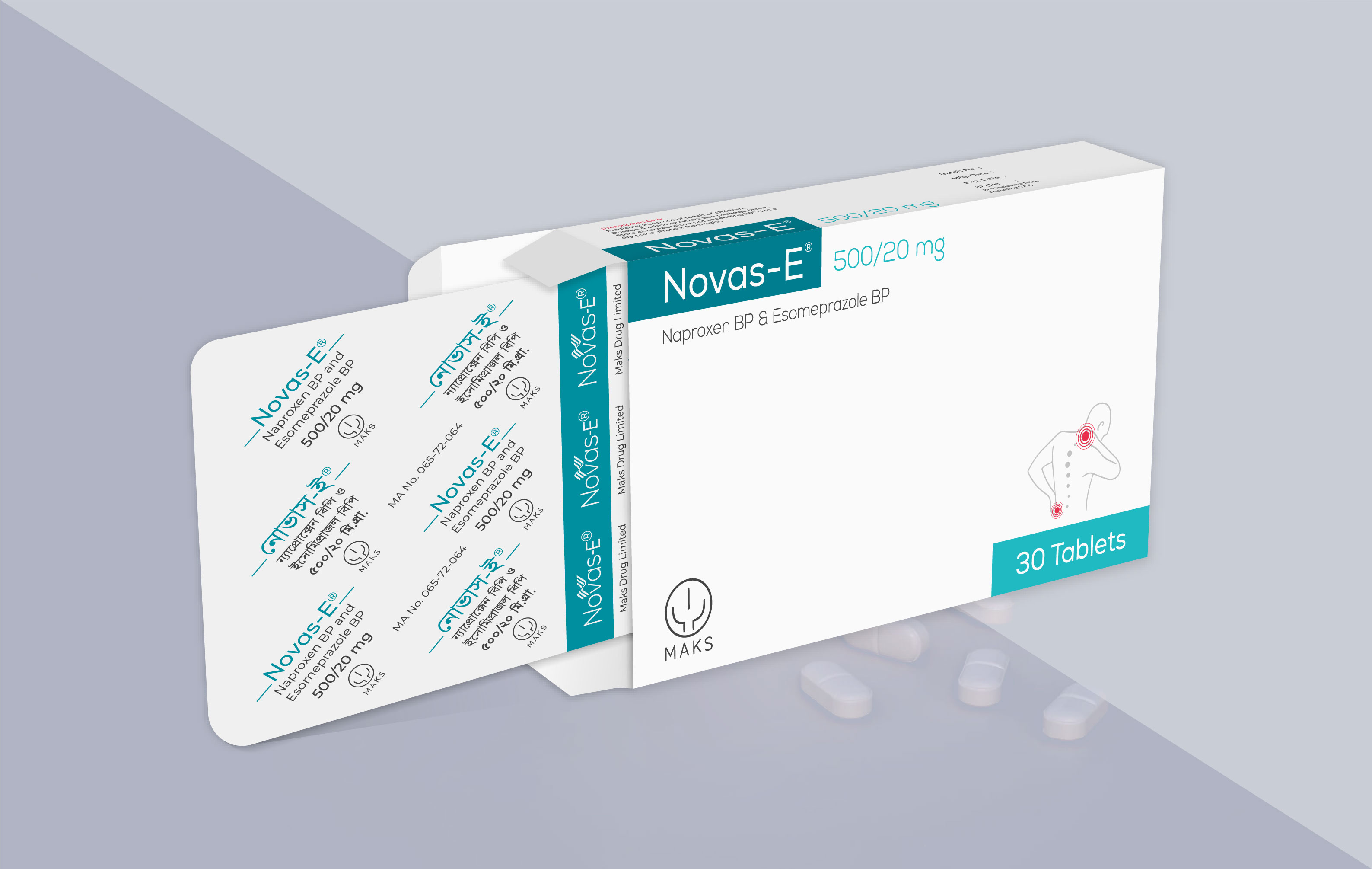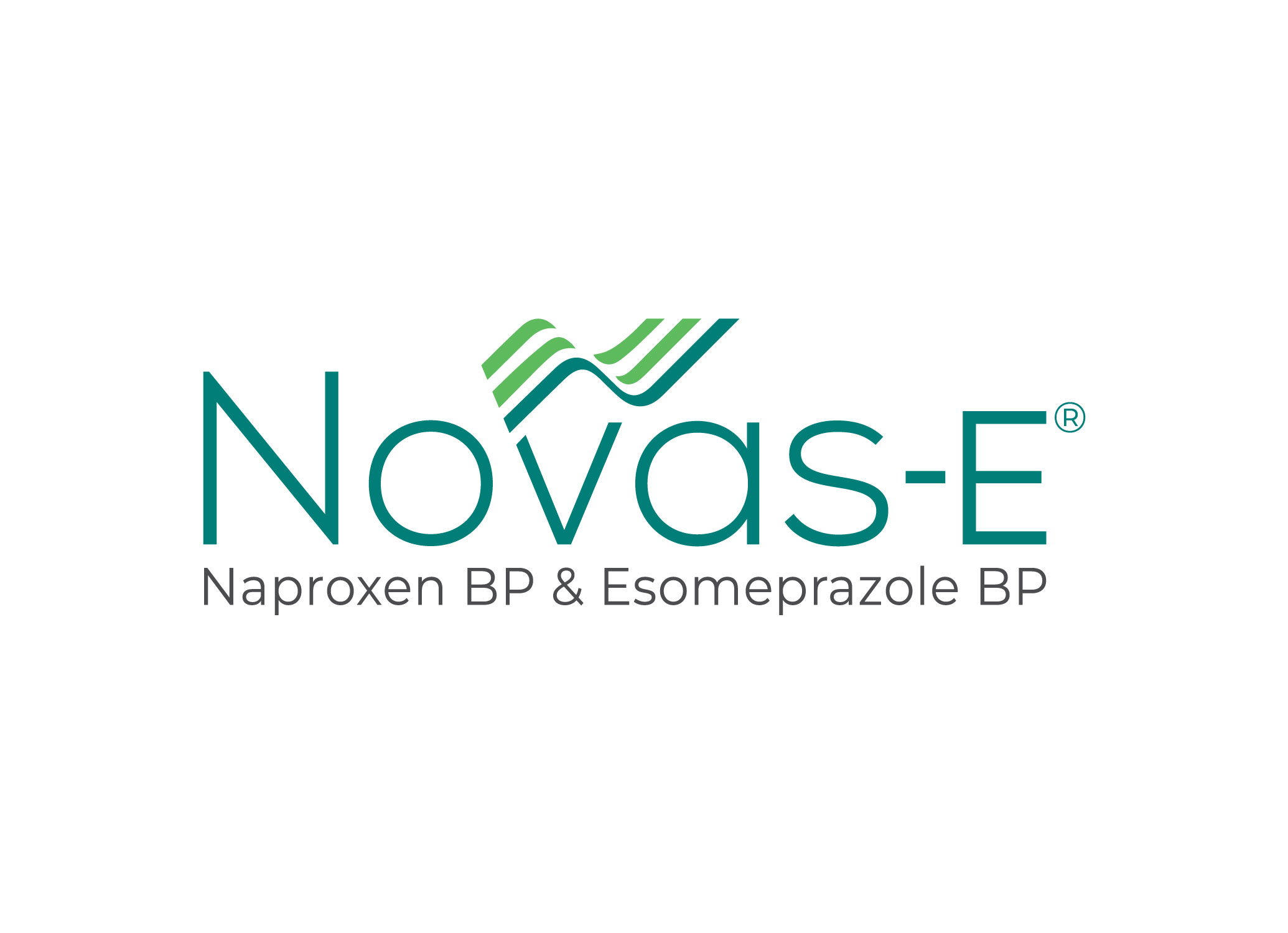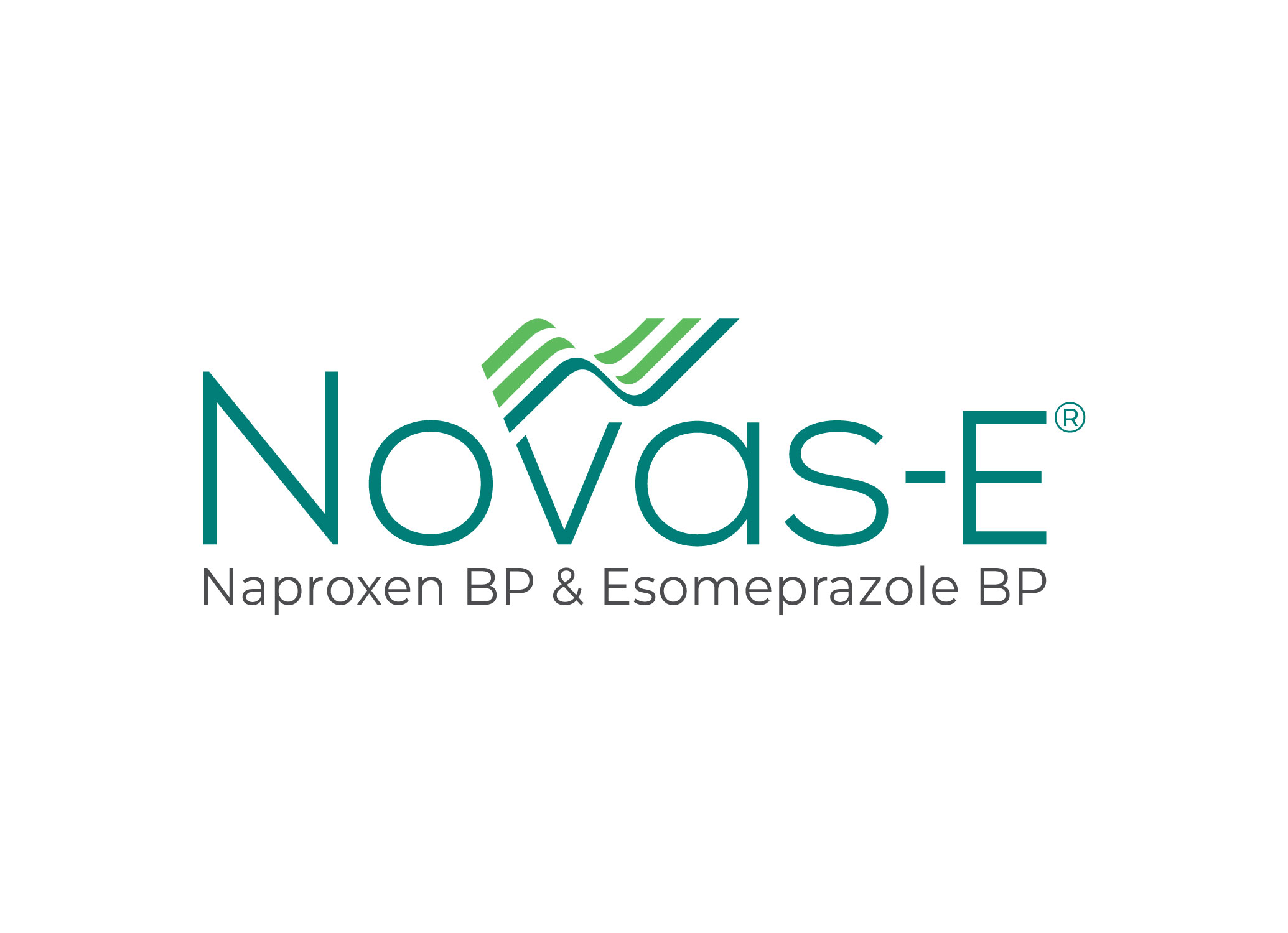Novas-E (Naproxen & Esomeprazole)
Therapeutic Group: NSAIDs
Novas-E® 500 mg Tablet: Each
tablet contains delayed release Naproxen BP 500 mg and immediate release
Esomeprazole Magnesium Trihydrate BP equivalent to Esomeprazole 20 mg.
Novas-E® consists of Naproxen
(enteric-coated, delayed-release core) and Esomeprazole (as esomeprazole
magnesium trihydrate, immediate release layer surrounding the core). As a
result, Esomeprazole is released first into the stomach, prior to the dissolution
of Naproxen in the small intestine. The enteric coating prevents Naproxen
release at pH levels below 5.5.
Naproxen is a nonsteroidal
anti-inflammatory drug (NSAID) with analgesic, anti-inflammatory and
antipyretic properties. The mechanism of action of Naproxen is to inhibit
prostaglandin synthesis. Esomeprazole is a proton pump inhibitor that
suppresses gastric acid secretion by specific inhibition of the H+/K+-ATPase in
the gastric parietal cell. By acting specifically on the proton pump,
Esomeprazole blocks the final step in acid production, thus reducing gastric
acidity.
It is indicated for the relief of
signs and symptoms of osteoarthritis, rheumatoid arthritis and ankylosing
spondylitis and to decrease the risk of developing gastric ulcers in patients
at risk of developing NSAID-associated gastric ulcers. Novas-E® is not
recommended for initial treatment of acute pain because the absorption of
naproxen is delayed compared to absorption from other Naproxen containing
products.
Carefully consider the potential benefits and risks of Novas-E® and other treatment options before deciding to use Novas-E®. Use the lowest effective dose for the shortest duration consistent with individual patient treatment goals. Novas-E® does not allow for administration of a lower daily dose of Esomeprazole. If a dose of Esomeprazole lower than a total daily dose of 40 mg is more appropriate, a different treatment should be considered.
Rheumatoid Arthritis,
Osteoarthritis & Ankylosing Spondylitis:
The tablets are to be swallowed whole with liquid. Do not split, chew, crush or dissolve the tablet. Novas-E® is to be taken at least 30 minutes before meals.
Geriatric Patients: Studies indicate that although total plasma concentration of naproxen is unchanged, the unbound plasma fraction of Naproxen is increased in the elderly. Use caution when high doses are required and some adjustment of dosage may be required in elderly patients. As with other drugs used in the elderly use the lowest effective dose.
Patients with Moderate to Severe Renal Impairment: Naproxen-containing products are not recommended for use in patients with moderate to severe or severe renal impairment (creatinine clearance <30 mL/min).
Hepatic Insufficiency: Monitor patients with mild to moderate hepatic impairment closely and consider a possible dose reduction based on the Naproxen component of Novas-E®. Novas-E® is not recommended in patients with severe hepatic impairment because esomeprazole doses should not exceed 20 mg daily in these patients.
Pediatric Patients: The safety and efficacy of Novas-E® in children younger than 18 years has not been established. Novas-E® is therefore not recommended for use in children.
Most common adverse reactions in
clinical trials (>5%): erosive gastritis, dyspepsia, gastritis, diarrhea,
gastric ulcer, upper abdominal pain, nausea.
» Serious and potentially fatal
cardiovascular (CV) thrombotic events, myocardial infarction and stroke.
Patients with known CV disease/risk factors may be at greater risk.
» Serious gastrointestinal (GI)
adverse events, which can be fatal. The risk is greater in patients with a
prior history of ulcer disease or GI bleeding, & in patients at high risk
for GI events, especially the elderly. Novas-E® should be used with caution in
these patients.
» Treatment should be withdrawn
when active and clinically significant bleeding from any source occurs.
» Elevated liver enzymes and,
rarely, severe hepatic reactions. Discontinue use immediately if abnormal liver
enzymes persist or worsen.
» New onset or worsening of
pre-existing hypertension. Blood pressure should be monitored closely during
treatment with Novas-E®.
» Congestive heart failure and
edema. Novas-E® should be used with caution in patients with fluid retention or
heart failure.
» Renal papillary necrosis and other renal injury with long-term use. Use Novas-E® with caution in the elderly, those with impaired renal function, hypovolemia, salt depletion, heart failure, liver dysfunction and those taking diuretics or ACE-inhibitors. Not recommended for patients with moderate or severe renal impairment.
» Anaphylactoid reactions. Do not use Novas-E® in patients with the aspirin triad.
» Discontinue Novas-E® at first appearance of skin rash or any other sign of hypersensitivity.
» Concomitant use of NSAIDs may reduce the antihypertensive
effect of ACE Inhibitors, diuretics, and beta-blockers.
» Concomitant use of NSAIDs increases lithium plasma levels.
» Concomitant use of Novas-E® with methotrexate may increase
the toxicity of methotrexate.
» Concomitant use of Novas-E® and warfarin may result in
increased risk of bleeding complications. Monitor for increases in INR and
prothrombin time.
» Esomeprazole inhibits gastric acid secretion and may
interfere with the absorption of drugs where gastric pH is an important
determinant of bioavailability (eg, ketoconazole, iron salts and digoxin).
Store at temperature not
exceeding 30º C in a dry place. Protect from light and humidity.
Novas-E® 500 mg Tablet: Each box
contains 3X10’s tablets in Alu-Alu blister strips.



